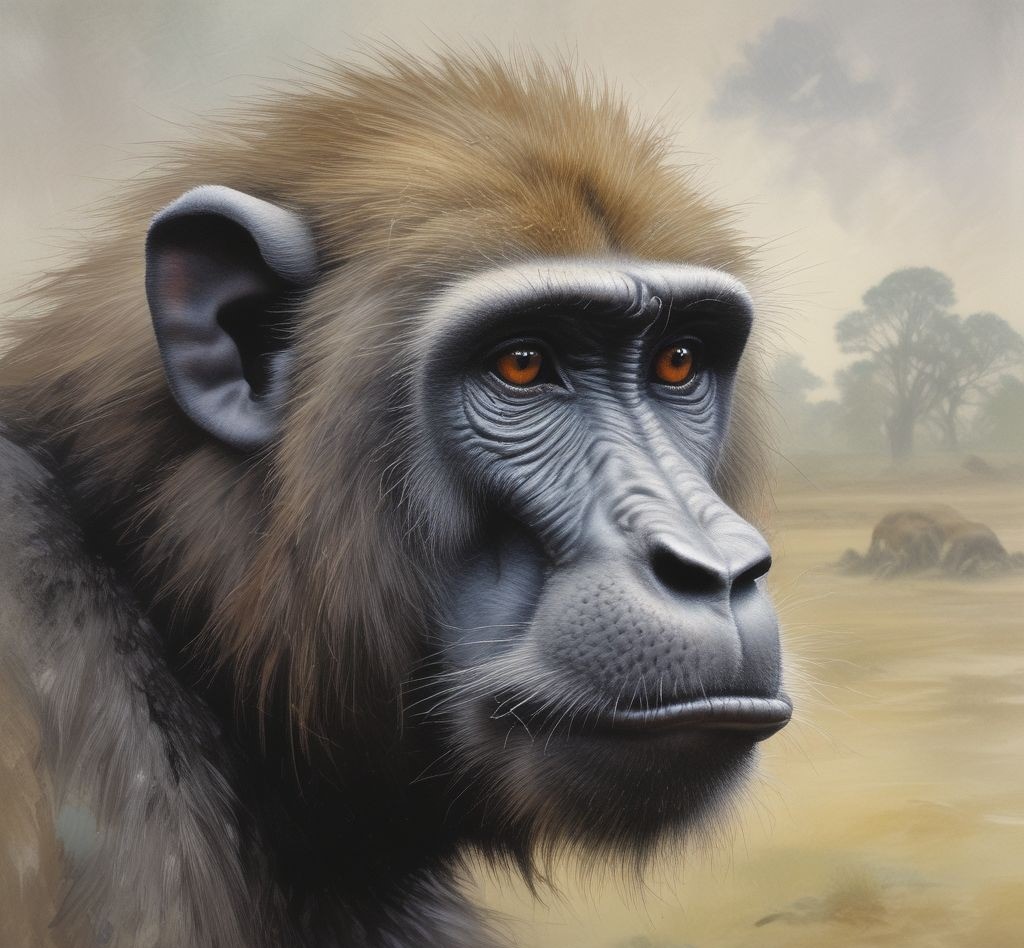🐵 All About the Baboon
The clever monkey with a big nose and an even bigger family! 👃🐒👨👩👧👦
📖 Quick Overview
| Feature | Details |
|---|---|
| Animal Name | Baboon |
| Habitat | Africa – savannas, woodlands, hills, and even deserts |
| Food | Fruits, seeds, insects, small animals (Omnivore) |
| Group Name | Troop |
| Baby Name | Infant |
| Special Skill | Super smart and great at teamwork in big groups! |
| Danger Level | Least Concern to Vulnerable (depends on species) 🟢🟠 |

🌟 What Is a Baboon?
Baboons are monkeys with dog-like faces, strong arms, and big brains!
They have:
- Long muzzles like a dog
- Powerful jaws and big teeth
- Short tails and rough, thick fur
- Tough padded bottoms for sitting on rocks
- Brightly colored rear ends (especially in some species!)
There are five types of baboons, including the Chacma, Olive, Yellow, Guinea, and Hamadryas.
📍 Where Do Baboons Live?
Baboons live all over Africa and even parts of the Arabian Peninsula.
🗺️ Natural Habitat:
- Dry savannas
- Forests and hills
- Rocky areas and cliffs
- Near waterholes or rivers
They spend time both on the ground and in trees.
🍽️ What Do Baboons Eat?
Baboons are omnivores—they eat almost anything they can find!
🍴 Favorite foods include:
- Fruits and seeds
- Roots and grasses
- Insects and lizards
- Eggs or small mammals
- Even human crops (watch your snacks!)
They use their hands to dig, peel, and crack open food.
👨👩👧👦 Family and Groups
Baboons live in big families called troops, with up to hundreds of members!
👶 Baby Baboon = Infant
Moms carry their babies on their chest or back
The troop protects and teaches young baboons how to live in the wild.
💪 Brilliant Baboon Powers
- Super strong arms for climbing and running
- Sharp eyesight to watch for predators
- Complex communication—they bark, grunt, and gesture
- Smart and social—they solve problems and form friendships
- Run up to 30 miles per hour!
💡 Fun Facts About Baboons
- They groom each other to show love and make friends
- Can smile and yawn as signals (not always friendly!)
- Have favorite buddies in the troop
- Baboons sometimes raid farms for fruit and corn
- Hamadryas males have flowing silver capes of fur!
🛑 Are Baboons in Danger?
Some species are safe, while others are vulnerable due to:
- Habitat loss from farming and buildings
- Hunting or trapping
- Conflicts with humans
💚 How Can We Help?
- Protect natural habitats and national parks
- Support wildlife conservation groups
- Learn to share space with wild animals
- Teach others how baboons help nature
✏️ Activity: Make a Baboon Mask!
🎨 Use cardboard, markers, and string to:
- Color a funny baboon face
- Add big ears and a bright muzzle
- Pretend to chatter and groom like a baboon!

✅ Summary
| 🗂️ Category | 🐵 Baboon |
|---|---|
| Type | Mammal (Primate) |
| Diet | Omnivore (fruit, bugs, seeds, small animals) |
| Habitat | African savannas, forests, rocky hills |
| Group | Troop |
| Special Skill | Super social and smart problem-solvers |
| Danger Level | Varies by species (Least Concern to Vulnerable) 🟢🟠 |